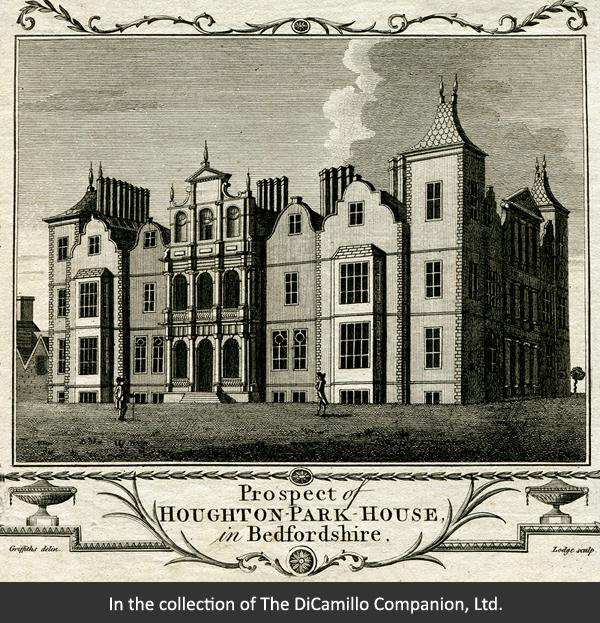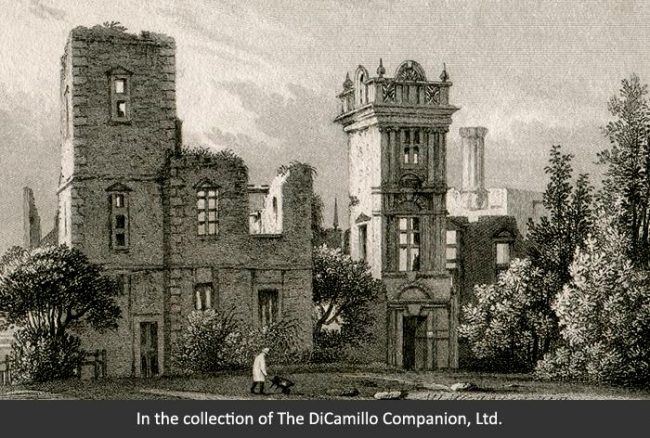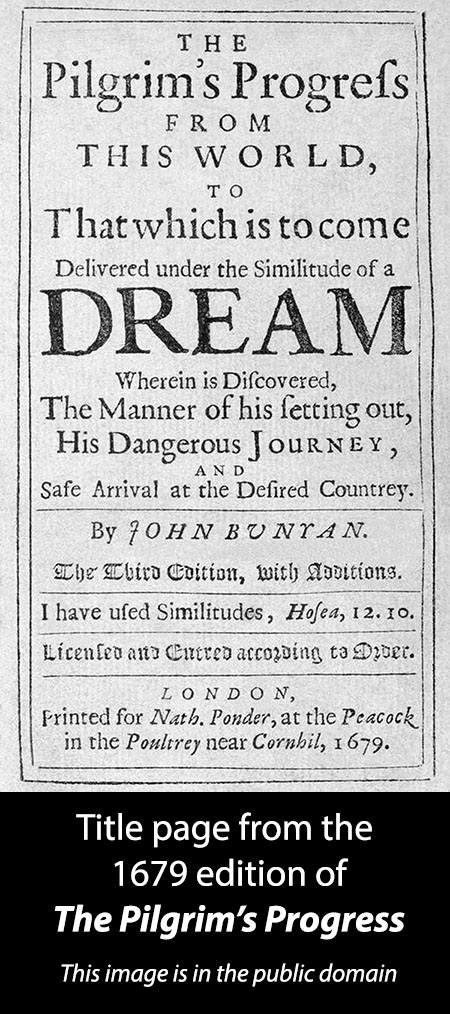
The house from the circa 1784 book "Walpoole's New and Complete British Traveller"

A circa 1825 image of the ruins of the house from "Marshall's Select Views of Great Britain"

Built / Designed For: Mary, Dowager Countess of Pembroke
House & Family History: Mary, Dowager Countess of Pembroke (sister of the famous Sir Philip Sidney), built the sophisticated three-story Houghton House in the early 17th century, possibly to the designs of Inigo Jones. After Lady Pembroke’s death in 1621 (the king, James I, visited her at Houghton just before her passing) the Bruce family, earls of Elgin, acquired the house and owned it until 1738, when it was sold to the 4th Duke of Bedford. By the late 18th century, the 5th Duke of Bedford, whose primary seat was at nearby Woburn Abbey, considered Houghton an expensive liability. In 1794 he ordered that the house be dismantled: the furnishings and fittings were stripped and sold, and the roof was removed and sold as building material. The 1688 staircase from Houghton, possibly the work of Christopher Wren or Nicholas Hawksmoor, is today at the Swan Hotel in Bedford. Houghton House is architecturally significant because of the classical stonework on its exterior, most particularly the Tuscan-columned loggia that features a grand frieze with the heraldic devices of the Sidney and Dudley families—one the first examples of the Jacobean style in Britain. Houghton was the supposed inspiration for House Beautiful in "The Pilgrim’s Progress." This 1678 Christian allegory, written by John Bunyan, is considered one of the most significant works of theological fiction in English literature. The book, whose full title is "The Pilgrim’s Progress from This World, to That Which Is to Come," has never been out of print. Houghton House is today a ruin and administered as an ancient monument by English Heritage. For years it was believed that the paneled room named the Haynes Grange Room in the collection of the Victoria & Albert Museum originally was installed at Houghton; however, this theory was disproved in 1992 by Mark Girouard, who posited that Chicksands Priory was the original location of the room.
Architect: John Thorpe
Date: 1615-21Architect: Nicholas Hawksmoor
Date: 1688Architect: Christopher Wren
Date: 1688Architect: Inigo Jones
Date: 1615-21House Listed: Grade I
Park Listed: Not Listed
Past Seat / Home of: Mary Herbert, Countess of Pembroke, until 1621. Thomas Bruce, 1st Earl of Elgin, 1624-63; Robert Bruce, 2nd Earl of Elgin and 1st Earl of Ailesbury, 1663-85; Thomas Bruce, 3rd Earl of Elgin and 2nd Earl of Ailesbury (Aylesbury), 1685-1738. John Russell, 4th Duke of Bedford, 1738-71; Francis Russell, 5th Duke of Bedford, 1771-94.
Current Ownership Type: English Heritage
Primary Current Ownership Use: Visitor Attraction
House Open to Public: Yes
Phone: 01223-582-700
Email: [email protected]
Website: https://www.english-heritage.org.uk
Historic Houses Member: No